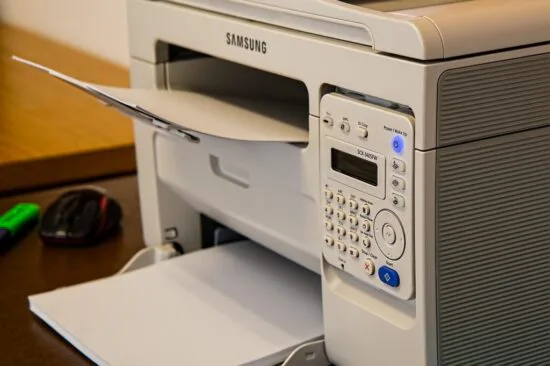Duplication of Work Meaning: Causes, Risks, and How to Fix It

Duplication of work happens when people or systems carry out the same task more than once without good reason. The result is wasted effort, higher cost, and a greater chance of error. Understanding what duplication of work means and where it appears is the first step to removing it.
Duplication of work meaning and definition
In an organization, duplication of work means that the same activity is carried out more than once when one instance would have been enough. This can involve several people entering the same data into different systems, separate teams building similar reports, or parallel approval chains checking the same information.
Some overlap is deliberate, for example in quality control or risk management. Duplication of work becomes a problem when it is unplanned and unmanaged. In that case it consumes time, increases cost, and still does not guarantee better outcomes for customers or regulators.
NMS Consulting addresses wasted effort, including duplicated tasks and rework, in its Performance Improvement services, which focus on removing waste and improving flow in business processes.
Examples of duplication of work in practice
Duplication of work can appear in many areas of business. A few common patterns help bring the meaning to life.
- Multiple teams building similar slide decks or spreadsheets to answer the same management question, each using slightly different data.
- Customer or vendor details entered separately into finance, CRM, and operational systems, instead of using a shared master record.
- Two departments running separate surveys or meetings with the same group of stakeholders, without sharing results.
- Project teams updating status in several tools and trackers because there is no agreed single source of truth.
- After a merger, legacy processes continuing in both organizations, so the same work is done twice across overlapping teams.
Articles such as Business Performance Improvement: Unleashing Excellence and Business Changes: Strategy, Execution and Change Management discuss how inefficient processes and unclear roles show up as repeated or overlapping work.
Common causes of duplication of work
Duplication of work rarely comes from one single cause. It usually reflects several issues in process design, organization, and technology.
-
Unclear roles and responsibilities.
When it is not obvious who owns a task, several people may complete it “just in case,” or managers may assign similar tasks to different teams. -
Fragmented processes.
Work passes between departments without coordinated design, so checks, data entry steps, and approvals accumulate over time. -
Disconnected systems.
Separate tools that do not share data lead staff to retype or reformat information, often using their own spreadsheets. -
Insufficient communication.
Teams may not know what others are doing, especially in large organizations or during rapid growth, so they unknowingly repeat work. -
Mergers and restructuring.
After a merger or reorganization, duplicate roles and parallel processes can persist if the operating model is not redesigned.
NMS Consulting notes such challenges in post merger situations and transitions, where overlapping systems and processes create duplicated efforts and lower productivity. These issues are addressed in insights on integration and business transitions.
Risks and costs of duplicated work
Duplication of work harms more than efficiency. It affects cost structure, service quality, and risk exposure.
-
Higher operating cost.
Staff time is one of the largest expenses in many organizations. Repeating tasks that do not add value directly increases cost. -
Slower decision making.
When multiple versions of the same information exist, teams must reconcile them before acting, which slows response. -
Greater error and inconsistency.
The more times data is retyped or reports are rebuilt, the greater the chance that figures will disagree or important items will be missed. -
Lower employee engagement.
Employees who feel they are doing unnecessary work or filling out repeated forms are less engaged and more likely to feel frustrated. -
Weaker control environment.
Paradoxically, duplicated checks can give a false sense of comfort if responsibilities are not clearly assigned.
Performance improvement work at NMS Consulting focuses on these impacts, linking removal of waste and rework to improved profit and better customer outcomes.
How to identify duplication of work
To reduce duplication of work, organizations first need to see where it occurs and how much it costs. Several simple techniques help.
-
Process mapping.
Document how work actually flows, not just how it appears in procedure manuals. Look for repeated steps, extra checks, and multiple sources for the same data. -
Role and responsibility review.
Use a clear assignment matrix so that each activity has a single accountable owner. Areas where ownership is unclear are often areas of duplication. -
System and data review.
List where key data is stored, how often it is entered, and who maintains it. Repeated entry and manual reconciliations are signals of duplicated effort. -
Employee feedback.
Ask staff which tasks feel repetitive or unnecessary. People close to the work usually know where duplication of work causes frustration. -
Project and report inventory.
Review recurring reports and projects. If managers receive several similar reports, or if teams run overlapping meetings, duplication is likely.
NMS Consulting uses structured assessments of processes, technologies, and organization to find such issues when planning performance improvement and change programs.
Ways to reduce and prevent duplication of work
Once duplicated work is visible, organizations can act. The goal is not to remove every overlap, but to remove those that do not serve a clear control, quality, or customer purpose.
-
Redesign processes.
Simplify flows so each step has a clear input, output, and owner. Remove redundant checks and combine steps where possible. -
Clarify ownership.
Make it clear who creates each document, report, or data set, and who can reuse it. This reduces temptation to rebuild material from scratch. -
Standardize templates and data sources.
Use shared templates, common data sets, and central repositories so teams draw from the same information. -
Integrate systems where feasible.
Connect tools so data is entered once and reused. Even partial integration or simple automation can remove repeated input. -
Set simple rules for reports and approvals.
Agree which reports are mandatory and which can be retired, and design approval chains that are as short as possible while still effective.
The Performance Improvement page explains how NMS Consulting applies process redesign and analytics to cut waste and duplication while protecting quality and customer experience.
Role of change and performance programs
Removing duplication of work is not only a process exercise. People need support to let go of old habits and trust new ways of working. Without attention to behavior and adoption, duplicated tasks often return.
Effective programs combine performance improvement and change management.
- Performance improvement work identifies duplicated tasks, quantifies their cost, and designs better flows and metrics.
- Change management helps leaders explain why work is changing, prepares managers and staff, and tracks adoption until new routines hold.
NMS Consulting describes these services on its Change Management, Change Management Services as a Managed Program, and Change Management Services for Leaders and Managers pages, which show how structured change support raises the chance that process improvements will stick.
How NMS Consulting can help
NMS Consulting works with organizations that want to reduce waste, simplify work, and free capacity for higher value activities. Duplication of work is one of the most common forms of waste that appears in performance and change projects.
Support often includes:
- Rapid assessments of processes and roles to find duplicated tasks and rework.
- Design and delivery of improvement initiatives that cut unnecessary steps and clarify ownership.
- Change programs that prepare leaders and teams for new ways of working and track adoption over time.
- Coaching and tools so internal teams can continue to spot and remove duplication of work after the project ends.
For a broader view of how these services connect, review NMS Consulting’s Core Consulting Services, Performance Improvement, and Business Transformation pages.
FAQ on duplication of work
- Is duplication of work the same as rework?
- They are related but not identical. Duplication of work is when two people or teams do the same task, often in parallel. Rework is when a task has to be done again because the first attempt was incomplete or incorrect. Both add cost and delay.
- Can duplication of work ever be useful?
- Yes, if it is intentional and managed. For example, independent checks in high risk processes can be important. The key is to be clear about where overlap is needed and where it is wasteful.
- How do we know which duplicated tasks to remove first?
- Start with areas that consume a lot of staff time or affect critical processes such as customer onboarding, billing, or financial close. Combining employee input with simple time and volume estimates helps prioritize efforts.
- How often should we review processes for duplication of work?
- Many organizations review key processes annually and also review them during major changes such as system upgrades, mergers, or organizational restructuring. Regular smaller reviews can prevent waste from building up again.
- Who should sponsor work to reduce duplication of work?
- Senior leaders in operations, finance, or transformation often sponsor such programs. What matters most is that the sponsor has authority across functions, since duplicated work usually crosses departmental lines.



